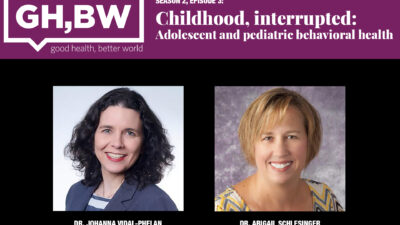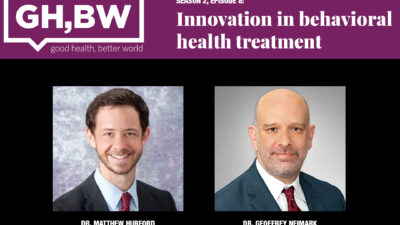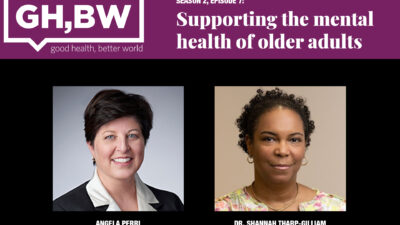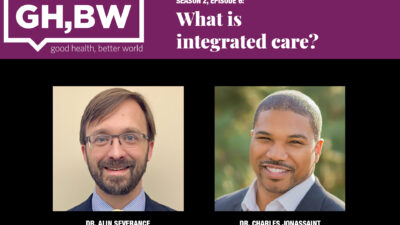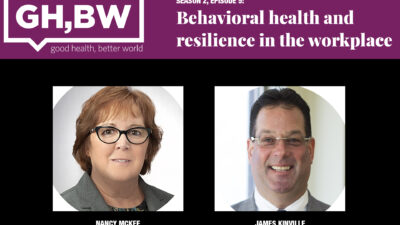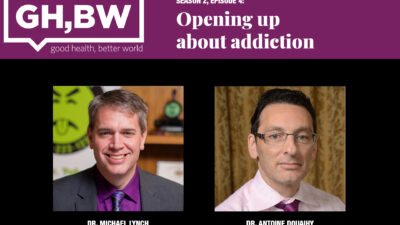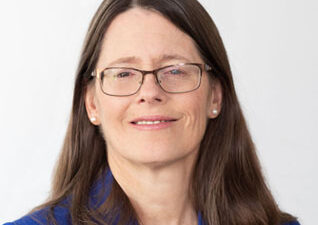In this episode:
In this season’s third episode, our guests talk with host Dr. Ellen Beckjord about ways that the pandemic disrupted childhood routines in ways that experts are still seeking to understand.
Hear from UPMC Children’s Hospital of Pittsburgh pediatrician Dr. Johanna Vidal-Phelan and psychiatrist Dr. Abigail Schlesinger.
They will discuss common behavioral health issues children and teens can have and what adults can do to support the health and well-being of their whole family.
Have questions? Email us at [email protected]
Resources:
Are you experiencing a crisis or are concerned about a loved one?
Residents of Allegheny County can call resolve Crisis Network which provides crisis counseling for a variety of issues, at 1-888-796-8226, or click here.
Learn more about The National Child Traumatic Stress Network, by clicking here.
Learn more about the Matilda H. Theiss Childhood Development Center, by clicking here.
For help with addiction, call the Substance Abuse and Mental Health Administration's hotline at 1-800-662-4357, or click here.
For help with a mental health crisis, reach National Alliance on Mental Illness by dialing 988, or click here.
To reach UPMC Western Psychiatric Hospital and UPMC Western Behavioral Health, call 1-877-624-4100, or click here.
UPMC Health Plan members can learn more about behavioral health programs, tools, and resources, by clicking here.
To learn more about Community Care Behavioral Health, click here.
More:
How did the pandemic affect your child? The Centers for Disease Control and Prevention offers a resource kit for parents and guardians. Learn more here.
Think your child may be addicted to screen time? Read more from Healthline.
Visit the Good Health, Better World podcast page, here, and read the transcript, below:
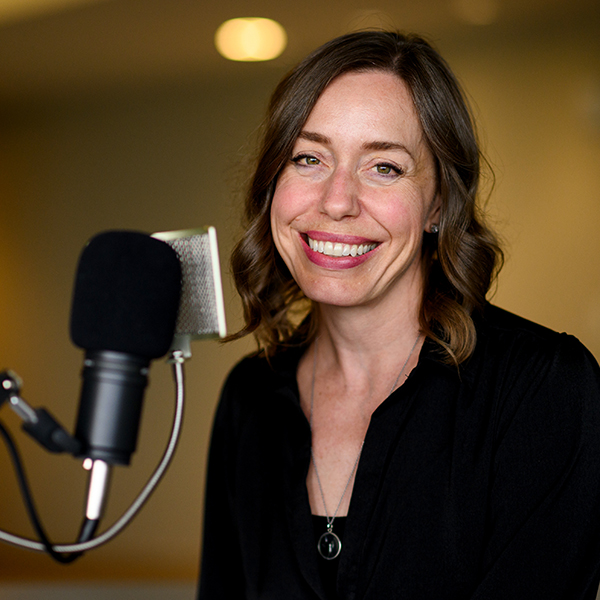
Dr. Ellen Beckjord: In this episode of Good Health, Better World, we're going to talk about adolescent and pediatric behavioral health.
I am very happy to have two wonderful guests with me today, Dr. Abigail Schlesinger, clinical chief of Child and Adolescent Psychiatry and Integrated Care for UPMC, Western Psychiatric Hospital and Children's Hospital of Pittsburgh, and Clinical Associate Professor of Psychiatry and Pediatrics at the University of Pittsburgh School of Medicine; and Dr. Johanna Vidal-Phelan, Chief Medical Officer in the Quality Department at the UPMC Health Plan Insurance Services Division, and Clinical Assistant Professor of Pediatrics at the University of Pittsburgh School of Medicine. Dr. Schlesinger, welcome to Good Health, Better World.
Dr. Abigail Schlesinger: Thank you.
Dr. Ellen Beckjord: Dr. Vidal-Phelan, welcome.
Dr. Johanna Vidal-Phelan: Thank you.
Dr. Ellen Beckjord: Children and teens can have behavioral health challenges that are different from those that adults experience. Dr. Vidal-Phelan, I hear your voice in my head all the time — children and adolescents are not little adults, they are children and adolescents. So, I'll start with you, Dr. Vidal-Phelan, can you talk about some of the challenges that might be unique to these younger age groups? And then Dr. Schlesinger, would love to hear your perspective as well.
Dr. Johanna Vidal-Phelan: Thank you so much, Ellen. And yes, children and teenagers are not little adults, which means we can’t treat them like such. For example, [for] children to be able to express their emotions, it's challenging. So, a young child saying, I'm depressed, I'm anxious — they're complex emotions and sentiments that are really difficult for children to communicate. And, so, as adults and as caregivers, it's really important that we recognize sometimes very subtle signs that do not present properly as, quote, “behavioral,” but more physical health, as signs of stress, as signs of anxiety and depression. Children are also different, and teenagers are different from adults as they depend on a parent or a caregiver to seek care, and so it's really important that we realize that unless we support the family as part of the entire behavioral world, it’s not something that we are going to be able to reach the children.
Dr. Ellen Beckjord: And I think that inclusion of the family is so important. It's come up in other discussions that we've had about children and adolescents, but it really increases the complexity of the landscape.
Dr. Johanna Vidal-Phelan: Absolutely. As a pediatrician myself, I'm not only treating the child in front of me, but his entire family. I'm educating the parents so that in the home environment they can care for their child and be successful, empowering caregivers to provide this care in the home.
Dr. Ellen Beckjord: Dr. Schlesinger, what are some of your thoughts on some of the unique challenges that behavioral health can present to children in adolescence?
Dr. Abigail Schlesinger: It starts with the family, and behavior starts as soon as a child is born. And it's easy for us to think about babies as needing their parents, right, because they can't survive, literally, without their parents. But even adolescents need their parents, and, as I often say, adolescents may not always appear like they're listening, but they're listening, and they're watching everything we do. But to go back to childhood and children, young babies, it is important to remember that children have different goals than adults do, things they need to accomplish, right? Young children need to learn how to speak before they can tell you they're depressed or tell you they're even happy, right? They start with smiles and learn how to go back and forth with their family. So, again, going back to what the doctor said earlier, how important that family really is to help the child develop their sense of who they are, to help them feel secure; but also, the family helps know who a child is if they're starting to experience new behaviors and whether that's like their child or whether it's a change that they're concerned about.
And there are so many opportunities to change the trajectory, really to change the course for a child, if you notice they're struggling in some way. And in the converse, if you notice there's a strength they have, there's a real opportunity to just have them take off in that area. So, children are not little adults, thank goodness, right, that's why we love having them around most of the time. But then teens, I think, is something that we should tackle separately. So, teens think they're little adults sometimes. And that's part of being a teenager, but is also when a variety of risk factors for depression, anxiety begin to develop as kids explore more, and they should explore, right? Kids should be taking risks. I'm sure many of us remember doing things that if our parents knew we did when we were younger, they might have been upset, right? But that's what kids do. They try new things.
And the earlier you help them recognize their emotions, respond to their emotions, and respond to those around them, the better off they'll be.
Dr. Ellen Beckjord: I'm just struck by how dynamic a time, childhood and adolescence, and even young adulthood, is — how many milestones there are, just how much movement and growth there is, which certainly creates a lot of opportunity for influence and also creates a lot of opportunity for, you know, specific and precise and strategic intervention. And, so, Dr. Schlesinger, if I can stay with you, I'd like to talk about the effect that the pandemic has had on children and adolescents.
Dr. Abigail Schlesinger: Yeah, I would gladly talk about that. And I guess I want to start with a caveat that what I'm going to say next isn't meant to scare anyone or meant to think that we have an entire generation of kids that are somehow going to be, quote, “messed up.” No. They had a different experience than I had as a child, that anyone listening to this podcast and an adult had an experience. And the more we're aware of the experience they had and how it might affect them, the better we can help, again, move them in the appropriate trajectory.
What I tell first is, to know your kid, spend time with your kid, talk to your friends and family about how they're doing, how you're doing, and go to a professional, like your pediatrician, if you're concerned. But it is true that kids are, it's a dynamic phase of life. In a couple of years, a kid goes from having no words to having 50 to 100 to 1000 words by the time they go to school, long before school, so really dynamic changes. And I like to use specific examples to describe how COVID's had an effect. So, if you were to learn how to speak and you didn't have very many people to interact with because your parents were working, because lots of us were working in front of a computer all the time, and then at night trying to catch up and figure out what's going on and may be scared, anxious, or depressed, that might impact the ability of the child to learn how to speak during that time, or the ability of you to see that they're not speaking as much as their peers because you didn't have them around their peers as much.
So, a lot of families noticed as we came out of the pandemic, when they put their kids around other kids, if they had kids beforehand, they're like, they're not interacting the way my kids before did. Well, they don't, because they didn't have the same experience. And it requires us to be, as parents, as not just parents, as members of this whole culture, more thoughtful about our children and more aware of what's going on with them. So, we can see how are they doing? What strengths are they developing? Maybe they're developing new strengths because they learned how to do something on a computer they would have never seen.
And then to jump ahead to those pre-teens. And we talk about teens all the time, but I really have been most impressed with the impact of the pre-teens. So, think about the difference for yourself, for when you were 10 or 11, and when you were 13 or 14. Big changes — social changes, emotional changes, friend groups change. And the social structure of school completely changed.
So, the pandemic has gone on for over two years now. And some kids, sadly, had almost no school during that time. The place where they learned how to be people, the place where they learned how to interact in groups and their social skills. So, if you take a kiddo and think about it for yourself, if you were 10 when the pandemic started in that March, when they said, go home and don't come back, and now it's two years later, or even a year later, and the whole sort of social structure has changed. Now, that may be easier for more social kids, right, or more impulsive kids that just sort of bang in and just say, here I am. The anxious kids, those quiet kids, may be more confused by the signals and, again, need more help from a supportive parent.
I talked to a lot of parents last year, and still this year, about maybe thinking about things like playdates for pre-teens and teens. You don't have to call them playdates anymore, but they might be useful for you to plan some events with them to help scaffold them.
Dr. Ellen Beckjord: I really love using that word, scaffolding. And I'll say personally, with my 13-year-old daughter, I'm noticing two things: One, that I do have to scaffold some of those getting back into social interactions; and also, I am 100% still calling them playdates, which drives her crazy.
And as you're talking, I'm wondering, I've always sort of thought that was maybe just a habit or maybe, you know, my reluctance at some subconscious level to allow her to, you know, emerge from childhood. But I'm wondering now if it's because back when she was doing a lot of socializing, they were still playdates. So, we're all sort of delayed, right?
Dr. Abigail Schlesinger: I noticed it with my son at the beach. We went out in the water and he didn't really understand undertow. And I was like, “What do you mean?” And I got scared. And then I realized he's so much further ahead physically than he was the last time he'd been at the beach, but as a parent, I never had to be around him at this stage. So yeah, we're all at a different place.
Dr. Ellen Beckjord: And that's a great point too, that just because these delays have happened in many instances, it's possible to catch up — growth is possible; recovery is possible; intervention is possible.
Dr. Abigail Schlesinger: And can I say with kids’ growth, growth is definitely going to happen. It's just how we move it along. Not just that they're going to get bigger and taller, they're going to change.
Dr. Ellen Beckjord: Dr. Vidal-Phelan, if I could ask for your perspective on some of the impact that COVID-19 has had on children and teens, and we'd love to hear your perspective from any angle, but especially as a pediatrician, as a practicing pediatrician, I'm also curious if you care to comment, from your perspective as the chief medical officer of the Quality Department, with respect to whether and how the pandemic has affected children being up-to-date on some of their preventive and routine medical care.
Dr. Johanna Vidal-Phelan: As a pediatrician, you know, those months of isolation and not seeing our patients, not only cause a lot of anxiety for families, but also for us as caregivers, because we definitely want to keep our patients in a medical home and we want to be available.
At the start of the pandemic, one of the biggest challenges I saw with children and families was access to information. Access to the information in the right language.
And we are definitely working really hard with our team and our physicians and providers to really make those well-child visits and immunizations a priority. At the same time, we are fighting misinformation every day and the amount of information that families and children are getting exposed in social media that is not correct is a concern. So really having the opportunities for families to come to our clinic, call us, do telemedicine visits, bring their questions and concerns about well-child visits and immunization is really important. And a message for families is that a well-child visit is not only about immunizations. A well-child visit, we are assessing the well-being of the family. We screen for social determinants of health. We screen for behavioral health concerns, especially like postpartum depression for the teenagers. We're screening for depression and anxiety.
Dr. Ellen Beckjord: I appreciate that you mentioned telemedicine emerging as a new tool and would be interested in either of your perspectives on ways that we're perhaps better making use of telemedicine in behavioral health care for children and adolescents. I can appreciate that there was still a really vital role that face-to-face encounters with child and adolescent health care providers needed to be maintained even during the course of the pandemic. And what a challenge that must have been.
Dr. Johanna Vidal-Phelan: Absolutely. And telemedicine is, is a tool to our reach, to our patients, to our community, and definitely, it provides an open door and opportunity for certain things that we can do from a home environment. So, for example, a follow-up for ADHD visit could be done via telemedicine or a follow-up for depression, anxiety.
And, also, the families really appreciate the opportunity to have this contact with their pediatrician, their behavioral health specialists, their family doctor from a home environment.
Dr. Ellen Beckjord: Dr. Schlesinger, if I could ask you to stay on that theme of family, which is so important in child and adolescent physical and behavioral health, you know, children and adolescents seems like it's very, very difficult for them to be healthy and well if the adults in their life are not healthy and well and able to support their health and well-being. So, can you talk about that? And in particular, I'm wondering if you think our care delivery system in physical or behavioral health is really set up to accommodate that need to have a family focus or a family level of intervention when it comes to health care for children and adolescents.
Dr. Abigail Schlesinger: I think we strive for it. I think we all strive for it. But let's be clear, the funding systems aren't necessarily set up to drive those sort of choices. Our world isn't really set up to drive those sorts of choices in the health care landscape. You know, we've done telehealth for a long time, actually. It didn't just start in the pandemic, but the massive shift of the number of providers that went to telehealth in March and April of 2020.
Many people got care because of the way our pediatricians and primary care doctors stepped up. So many people got care that they wouldn't have, if it wasn't for a primary care doctor. I can't say enough about that. And what I've seen throughout the pandemic is our primary care physicians continuing to say, well, how can we keep doing this? Because this is the right thing for our families and kids we see. Same for my behavioral health providers — how can we keep doing this?
I hear to this day people saying, you know, what can we do to help keep this available for kids and families? And I was also impressed, and continue to be, that we had two populations that may not always resonate as being similar to each other, both being at the same deficit when it came to the telehealth infrastructure. I see kids from the inner city and I see kids from rural areas and they each had the same problem. They didn't have good Wi-Fi. And it became apparent that we need, everyone needs, good Wi-Fi because that's, that's going to be vital as we move forward for people to have, to have the same access to care.
Dr. Ellen Beckjord: Absolutely. And, you know, I've been, I'm old enough, I should say, to remember when people started talking about the digital divide. Primarily now it seems to be about who has sufficient bandwidth, who has broadband access and who doesn't to do something like a synchronous video visit. And we cannot forget about that level of inequity that affects the potential of telemedicine to help solve some health disparities and health inequities. So, I appreciate that you brought that up. I think that's a really important point to make. Dr. Vidal-Phelan.
Dr. Johanna Vidal-Phelan: Thank you so much. I have to share an amazing story as a pediatrician during the beginning of the pandemic. Like many of us, I hadn’t used telemedicine until the pandemic started and quickly shifted to doing telemedicine visits, you know, that first year post pandemic. And it transforms me because of the feedback that I receive from the patients that telemedicine appointment, many of them were done in Spanish as I am bilingual, and the families were experiencing access to services in their own language from a home environment. They were so grateful. And the impact I was able to, for example during the telemedicine visits, such as which medications your child is taking, and mom be like, wait a minute, let me go to the kitchen cabinet and open it and show me the bottle — Oh, that's the green one, that's Zyrtec.
So, it's really very powerful how to use technology, match with language access and really addressing the needs of vulnerable communities during the pandemic.
Dr. Ellen Beckjord: I think it's really hard to probably overestimate how important all of, I mean, almost all of, like the latent benefits of telemedicine that you're mentioning, whether it be allowing people to receive health care in an environment that feels comfortable to them, for people when they're outside of their home environment, when that's when that's a real challenge, or not having to burden people with long transportation or long rides to get to the health care provider.
When Doctor Kimberly Blair was here and we talked about trauma-informed care and trauma-informed systems of care, she gave us lots of wonderful perspective from the child and adolescent vantage point, and she talked about the systems that children and adolescents are embedded in that are different from systems that adults are embedded in. And the two systems that she talked about were the family system, and the school system. And I'm wondering if either of you, or both of you, would care to comment on how those systems are instrumental to adolescent and pediatric behavioral health.
Dr. Abigail Schlesinger: Oh, I have so many thoughts about this. So, I'd like to expand the family system to include maybe kin, kin, or the sort of social, the whole social environment someone's people are in.
So, whatever that system is around you, that's outside of school — those systems are vital. And let's be clear, in COVID, each and every one of those systems were altered, so many at once, and they continue to be altered in ways that we need to be aware of for our children. So, in terms of families, we can't forget that many children in the United States lost their primary caregiver in the COVID pandemic. And I think within all of the information, misinformation, discussion, downright screaming about COVID, we sometimes forget that every time you bring up COVID, there's going to be a lot of kids that are going to have a trauma reaction to that because they lost either a parent or a grandparent. If your family was lucky enough to not lose their job during the pandemic, they were still stressed on a regular basis and stress takes time away from being a parent.
And, as we all know, it's a lot of work to be a parent. So, when those systems get stressed, it's harder on children. Now, luckily, children are resilient and they'll do things to get your attention when you're stressed about that. So, we saw some more behavior problems, too, right? I had family members come in and said I never realized my kid was this active. And you had to say like, well, we have to think, were they really this active or are they trying to get you to see, hey, look at me — get off that phone, get off that computer, look at me. So, you know, as I'm going to say later, behavior is an opportunity for kids to express themselves to us.
And no question that the family and social environment was impaired during the pandemic.
And hopefully they'll continued focus on how we rebuild those support systems through people, not just through medical specialties, but through our communities. And then the schools. I think lots of people just think school is about learning to read, write, you know, arithmetic, as they say.
When I think about school, I think about social relationships. I think about incredible teachers whose job is to help a child figure out who they are — to help sort of look at the grand scheme of the panoply of kids in front of them and help figure out what each kid's needs are. And, as a parent, there's no way I could know what my kid looks like in front of every kid in the class. I mean, I'm a child psychiatrist, I’ve probably seen thousands of kids, I still can't do it. This is a teacher's thing.
And our kids didn't see teachers for an entire year, some of them a year and a half.
And then when the teachers came back, they came back to a world that was nothing like what they were used to.
What are the long-term impacts like? How much support do we need to keep giving the teachers and the school as we move forward? And we really need to be thinking about them, all the helpers, quite frankly. But the teachers, you can't get lost in this because they are essential support for our kiddos in every way.
Dr. Ellen Beckjord: Absolutely. Such a critical source of support, and such critical surveillance, as you mentioned, eyes on those kids and, in a way, and from a perspective that is different from anybody else in their life and what challenging trade-offs must have been made around the decision to close schools to address transmission of COVID, against knowing what that was going to mean for kids who then were going to lose that whole system of support and surveillance and intervention for whatever length of time.
Dr. Vidal-Phelan, did you want to add to any of those thoughts about family or kin systems, community systems or school systems?
Dr. Johanna Vidal-Phelan: Yes. I mean, one of the things I really admire, even during our prep call and today's interview on behavioral concerns from children and the different perspectives, an opportunity as they're trying to express themselves, and that is so true.
And children have different talents and different needs. And as parents, caregivers, and community around children, we need to listen to that. Because when a child is supported, when a child has the resources, that child will thrive. And that's what we want. We want children to have a future to reach their full potential. And sometimes that means that we need to talk to the pediatrician about, you know, I have some concerns about behavior. Maybe that means having a call with the teacher in the school because teachers are essentially noticing behaviors that, and feedback that is really important to us and better understanding. I also want to point out that the pandemic disproportionately impacted vulnerable communities and children that come from communities of color, are Black children and Latino children.
Their experience, academically, is very different from the experience that my children have, for example. When my children left school because of the pandemic, I quickly figured out a website to do math. I quickly was teaching things. I quickly became highly engaged. I speak English, so that means that I have access to information. And I was humbled to see how parents would come to the pediatric office and say, I don't even know what's happening in the school. So, the lifelong impact of children technically missing almost a year of school is something that is felt differently in communities of color. So, we want to come along these communities and we want to support them and we want to encourage them and we want to provide resources because all children, deserve the opportunities to again reach their full potential. And it has been a challenge.
Dr. Ellen Beckjord: t as we've talked about, children and adolescents, partly because of the expected lifespan they have ahead of them, and I think also partly because of that dynamic nature of that time in life when intervention can have such a meaningful impact, not that intervention at any phase of life can't have an impact, but just that leverage point, given the dynamic nature of those milestones and childhood and adolescence, such an investment that we make when we invest in our children
Dr. Abigail Schlesinger: And such a complicated investment, right? Because the payoff may be a decade to 20 to 40 years later, we often hear, what's the return on investment? What are you going to get? And unfortunately, you know, we as humans aren't smart enough yet to figure out how to calculate that 10, 20-year payoff. We have to understand what's going on here, and believe that by investing in young children, investing in teenagers, that it will make a difference because the dollar signs won't always prove it.
Dr. Ellen Beckjord: And I think when there is a time lag between the investment and the return, which is true in lots of cases, it becomes easy for people to say, “not it,” like, well, then who's going to make the investment, right? If there's a time lag between the investment and the return, it becomes less clear who's going to realize the return. But this is just the right thing to do. I mean, this is something that I've heard our CEO at UPMC Health Plan, Diane Holder, talk about the importance of making investments in children and in families because it's the right thing to do, and it will pay off.
Dr. Johanna Vidal-Phelan: You know, we're in the healthcare industry. We all figured it out together, and things were changing so quickly. But it really reflects what you just said earlier — teenagers, children are looking at us. You can tell them, don't do this, but if you're doing it, they're going to see what you're doing and follow that.
And, also, as parents, we need to exemplify to them, we care for ourselves too. So, we care for them, but in order for them to learn good behavior, they need to know that I am taking care of myself — I am eating healthy, I am exercising, I'm doing all these behaviors to have a healthy life, which I want to pass on to you. So, I think, you know, when we think about children and you said earlier the ROI, when you give healthy food to children, clean water, a stable housing, good and affordable education, they thrive, and they are reaching their full potential — well-adjusted adults. And so, our goal, and if anybody listening understands being a parent is hard, you know, but it is an investment. So, if your child is showing signs of stress, if you have concerns, stop what you're doing, get help — call your pediatrician, call your therapist, call your psychiatrist.
Dr. Ellen Beckjord: You know, so often I think we're more likely to help others than we are to help ourselves. But I think parents are often motivated to be the best they can be for their children.
Dr. Abigail Schlesinger: It's one of the main reasons many people get help that are parents. I certainly see that in my practice. And, you know, this just reminds me the other vulnerable group coming out of the COVID pandemic is the helper group, right? So, any group that defines themselves as a helping group is vulnerable — doctors, nurses, frontline health workers, mothers.
Dr. Johanna Vidal-Phelan: Teachers.
Dr. Abigail Schlesinger: I often like to remind people, think about it like, in what way are you, what part of that helping group and are you doing everything you need to do for you so you can help your children? And then we need to really reach out to society to help them.
Dr. Ellen Beckjord: Yep, absolutely. Well, one last question that I'd like to ask both of you, and perhaps Dr. Vidal-Phelan, we can start with you, and then Dr. Schlesinger would love to hear your perspective, too. What would you like to see for the future of pediatric and adolescent behavioral health, knowing that there are any number of answers you might give to that question, but if you had to prioritize one, Dr. Vidal-Phelan, what is something that you would really prioritize to bring about the change, or the transformation, or the potential we know is possible in pediatric and adolescent behavioral health?
Dr. Johanna Vidal-Phelan: I would say integration of your behavioral, emotional, spiritual health as part of healthcare in general, no? And working alongside behavioral health providers together to have that holistic view of my patient, our families together. I think there's a lot of division between physical health and behavioral health, and we know that that is interconnected. One cannot be well without the other.
And so really, I want to think about integration of, of de-stigmatizing behavioral health, just like I get a BMI in the practice, which is body mass index, I want to talk about behavioral health. I want to talk about the well-being of the family, because many times when that is not in the right place, all the other things that I want to do, like nutrition and exercise, counseling and anticipatory guidance are not heard. I think, the other one for me, I really would like to see access to behavioral health services that are multi-linguistic and multicultural. Many times, the challenge is, I'm working with a family who speaks Spanish, for example, and to get services from a therapist or psychiatrist that not only speaks Spanish, understands the culture and can really put it in that context.
Dr. Ellen Beckjord: Thank you. Dr. Schlesinger, how about you?
Dr. Abigail Schlesinger: Well, I love what you said and totally resonate with the need to combine physical health and mental health and see it all as one, the whole person, as they say. But I think I'd like to focus on, on when we see children and how they're doing, that I'd like us to get to a point where, when a child has a behavior that's maybe different, that we don't see it as a problem necessarily to be fixed, but as an opportunity to see, what are they trying to tell us?
What are the next steps? So, let's be clear. I'm a child and adolescent psychiatrist. I diagnose, I make diagnoses, I prescribe medicine, I prescribe services, help, and I help families figure out what the problems are. But, I think, people would be a lot less scared to come see me or a therapist, and we'd be able to work a lot better together, if when we talk to, when we look at kids, when we talk about how people are doing, we really see every behavior as an opportunity to help that child.
Dr. Ellen Beckjord: Now, I love that answer, thinking about behavior as communication and problem-solving, not calling things problems, but if there's problem-solving to be done, working together to figure out how to help children and adolescents and families really realize their full potential and quality of life that they're seeking to achieve that all of us deserve.
Well, Dr. Schlesinger, Dr. Vidal-Phelan, I want to thank you both so much for being guests on Good Health, Better World. I have such respect and admiration for helpers, especially those who help children and adolescents.

